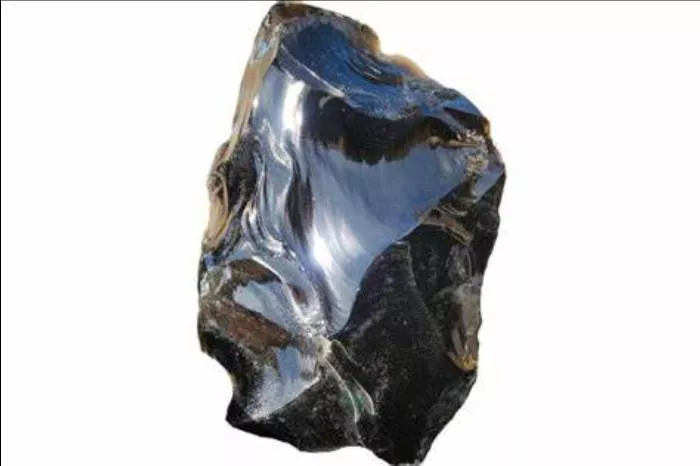Black tourmaline is one of the most popular protective stones in the jewelry world, known for its deep, opaque black color. But many customers in my store ask me: “Does black tourmaline ever show green colors?” The answer is more interesting than a simple yes or no. As a jeweler who has examined thousands of tourmaline specimens, I can explain exactly when and how black tourmaline might reveal green hues, and what this means for your jewelry.
Understanding Pure Black Tourmaline
First, let’s discuss what classic black tourmaline looks like. The most common variety, called schorl, is an iron-rich tourmaline that appears completely opaque black to the naked eye. When you examine it under bright light, high-quality specimens show:
- A vitreous (glassy) luster
- Possible faint striations along the crystal length
- Deep, even black coloration with no transparency
This pure black variety contains enough iron to mask any other potential colors completely. In my 15 years of cutting and setting tourmalines, I’ve found that about 80% of commercial black tourmaline jewelry uses this pure black material.
When Black Tourmaline Shows Green
However, certain conditions can make black tourmaline reveal green colors:
Thin Slices or Small Chips
When black tourmaline is cut into very thin slices (under 2mm), light can sometimes penetrate enough to reveal:
- Hidden green undertones
- Possible slight transparency
- A dark forest green rather than pure black
Certain Lighting Conditions
Under extremely strong direct light (like a jeweler’s spotlight), some black tourmalines may display:
- Green reflections at certain angles
- A subtle greenish cast at the edges
- Color play when rotated
Specimens with Color Zoning
Some black tourmaline crystals grow with color variations that might include:
- Green sections at the crystal base
- Alternating bands of black and dark green
- Gradual color shifts along the length
Partially Altered Specimens
Natural weathering or chemical changes can sometimes create:
- Green surface stains from oxidation
- Patinas that reveal underlying colors
- Phantom green crystal patterns inside
Scientific Explanation for Green Hues
The potential for green in black tourmaline comes down to mineral chemistry:
- Pure black schorl contains iron (Fe²⁺) causing black color
- Some specimens also contain vanadium or chromium
- These elements can add green color components
- Iron usually dominates but doesn’t always mask it completely
The more iron present, the blacker the stone appears. When iron content is slightly lower, underlying green tones may become visible under certain conditions.
Geographic Sources More Likely to Show Green
From my experience cutting material from different mines:
Brazilian Black Tourmaline
- Typically the purest black
- Least likely to show green
- Highest iron content
African Black Tourmaline
- Sometimes shows green in thin cuts
- More color variability
- May have color-zoned crystals
Pakistani Black Tourmaline
- Most likely to reveal green hues
- Often has visible color banding
- Frequently shows green in backlighting
Identifying True Green in Black Tourmaline
When examining a stone that appears to have green, I check for:
Natural Causes
- Gradual color zoning
- Crystal growth patterns
- Natural light transmission
Artificial Enhancements
- Dye treatments (uncommon but possible)
- Heat treatment to alter color
- Surface coatings
Optical Effects
- Thin film interference
- Refraction artifacts
- Lighting illusions
Jewelry Implications
For jewelry purposes, the presence of green affects:
Design Choices
- Pure black works in any style
- Greenish specimens better for:
- Nature-inspired designs
- Men’s jewelry
- Artisan pieces
Value Considerations
- Pure black commands standard pricing
- Strong green zoning may increase value
- Slight green undertones typically don’t affect price
Durability Factors
Pure black most consistent
Color-zoned pieces may have:
- Slight hardness variations
- Different polishing needs
Caring for Green-Showing Black Tourmaline
Stones that reveal green need special attention:
Cleaning Methods
- Avoid ultrasonic cleaners
- Use mild soap and soft brush
- Dry immediately after washing
Storage
- Keep separate from harder gems
- Wrap in soft cloth
- Avoid temperature extremes
Wear Considerations
- More noticeable scratches
- May fade slightly in strong sun
- Benefits from occasional oiling
Metaphysical Interpretations
For customers interested in crystal meanings:
Pure Black Tourmaline
- Strongest protective qualities
- Best for energy shielding
- Traditional grounding stone
Green-Showing Varieties
- Combines protection with growth energy
- Adds heart chakra connection
- Good for transformation work
How to Spot Quality Specimens
When selecting pieces:
For Pure Black
Look for:
- Even coloration
- Good polish
- No visible inclusions
For Green Displays
Seek:
- Clear color patterns
- Undamaged surfaces
- Pleasing color distribution
Conclusion
While classic black tourmaline appears completely black, certain specimens can indeed show green colors under specific conditions. This occurs most often in thin cuts, certain lighting, or stones from particular locations.
As a jeweler, I find both varieties valuable – pure black for its consistent protective energy, and green-showing specimens for their unique character. When choosing between them, consider your aesthetic preferences and intended uses.
Remember that all natural stones vary, and these subtle color differences are part of what makes each tourmaline unique. Whether you prefer pure black or stones with hidden green depths, you’re selecting one of nature’s most powerful protective gems.
Related topics:
- Does Black Tourmaline Have Green in It?
- Where is the Best Place to Find Tourmaline?
- Where Can I Find Black Tourmaline Stone?


